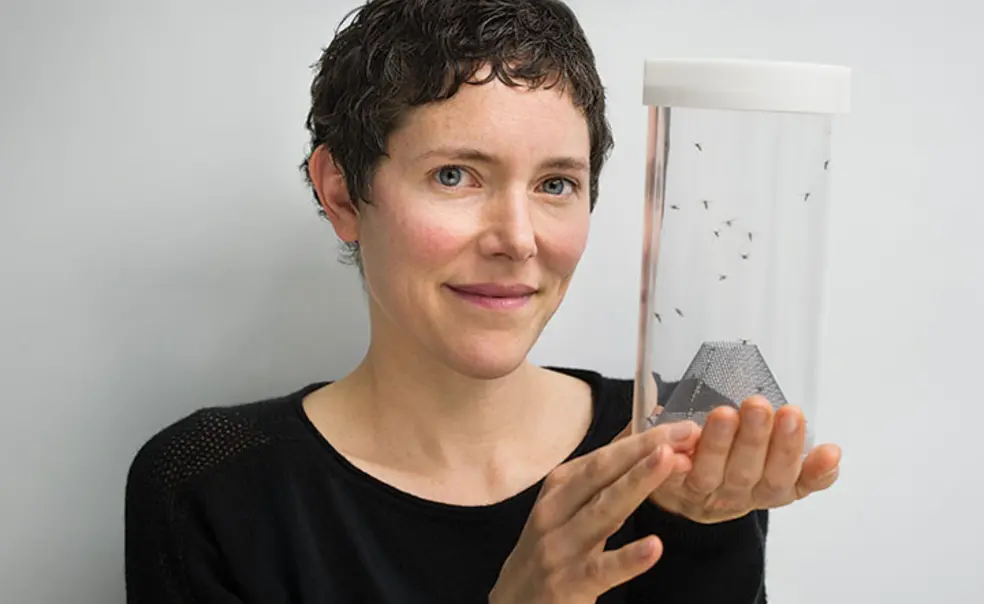Mosquitoes are a nuisance. They also can be a threat. A few types of mosquitoes carry diseases that can be spread to humans through their bites — such as the Aedes aegypti species, which can transmit the Zika virus and viruses causing dengue and yellow fever. But for assistant professor Lindy McBride, mosquitoes also are a window into understanding how genes dictate behaviors. The mosquitoes that are best at transmitting human diseases are those that prefer to bite humans over other mammals, and live in close proximity to humans. A. aegypti, for example, breeds in our flower pots, in other manmade water containers, and even inside our homes. “We want to know how mosquitoes became so good at not just biting us, but also living with us,” says McBride, who holds appointments in the Department of Ecology and Evolutionary Biology and the Princeton Neuroscience Institute.
Of the more than 3,000 species of mosquitoes around the world, only a handful specialize in sucking humans’ blood, which the females use for nourishing their eggs, not for their own nutrition. A. aegypti evolved from an ancestral species that once preferred sucking the blood of other mammals, McBride says. She is working to understand which mosquito genes changed over time and led the insects to prefer biting humans.
Because a direct comparison of modern-day, human-loving mosquitoes and their ancestors is not possible, McBride found the next best thing: two subspecies of mosquitoes in Kenya that live near each other but behave very differently. One prefers to bite animals and lays eggs in holes in trees. The other, a “domestic” subspecies that can spread viruses, prefers to fly into homes, bite people, and lay eggs inside human-built structures such as water jugs. McBride brought larvae of both subspecies back from Africa to study as a postdoc at Rockefeller University.
She discovered that, like their adult counterparts, the larvae of the domestic mosquito were easy to catch. The insects likely evolved to have little fear because they encountered few predators in people’s homes, says McBride.
Searching for genetic differences between the two subspecies, she found a disparity in a gene for an odor receptor in the insect’s antennae that functions like the human nose. The levels of the receptor were higher in the antennae of the domestic mosquito compared to the antennae of their forest-dwelling counterparts. This receptor binds to a compound emitted by human skin, which has an odor that can be detected by mosquitoes, called sulcatone.
McBride’s lab is conducting experiments to understand exactly how this and other changes influence the mosquitoes’ attraction to the smell of humans. More receptors may make the mosquitoes more sensitive to human odor, without altering antennae-to-brain wiring. Or evolution may have also rewired the way the mosquito brain perceives the smell, changing their behavior and making them fly toward humans rather than other mammals.
Ultimately, McBride hopes her work will help scientists devise effective ways for humans to repel mosquitoes: “The more we know about how mosquitoes recognize us, the better we will be able to design effective mosquito repellents for disease prevention.”












No responses yet